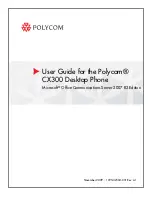
33-8
Cisco Security Appliance Command Line Configuration Guide
OL-12172-03
Chapter 33 Configuring Network Admission Control
Assigning a NAC Policy to a Group Policy
The following example removes all entries from the exemption list:
hostname(config-nac-policy-nac-framework)#
no exempt-list
hostname(config-nac-policy-nac-framework)
Assigning a NAC Policy to a Group Policy
Upon completion of each tunnel setup, the security appliance applies the NAC policy, if it is assigned to
the group policy, to the session.
To assign a NAC policy to a group policy, use the
nac-settings
command in group-policy configuration
mode, as follows:
[
no
]
nac-settings
{
value
nac-policy-name
|
none
}
no nac-settings
removes the
nac-policy-name
from the group policy. The group policy inherits the
nac-settings value from the default group policy.
nac-settings none
removes the
nac-policy-name
from the group policy and disables the use of a NAC
policy for this group policy. The group policy does not inherit the nac-settings value from the default
group policy.
nac-settings value
assigns the NAC policy you name to the group policy. To display the name and
configuration of each NAC policy, enter the
show running-config nac-policy
command.
By default, the
nac-settings
command is not present in the configuration of each group policy. The
security appliance automatically enables NAC for a group policy when you assign a NAC policy to it.
The following example command assigns the NAC policy named framework1 to the group policy:
hostname(config-group-policy)#
nac-settings value framework1
hostname(config-group-policy)
Changing Global NAC Framework Settings
The security appliance provides default settings for a NAC Framework configuration. Use the
instructions in this section to adjust these settings for adherence to the policies in force in your network.
Changing Clientless Authentication Settings
NAC Framework support for clientless authentication is configurable. It applies to hosts that do not have
a Cisco Trust Agent to fulfill the role of posture agent. The security appliance applies the default access
policy, sends the EAP over UDP request for posture validation, and the request times out. If the security
appliance is not configured to request a policy for clientless hosts from the Access Control Server, it
retains the default access policy already in use for the clientless host. If the security appliance is
configured to request a policy for clientless hosts from the Access Control Server, it does so and the
Access Control Server downloads the access policy to be enforced by the security appliance.
Summary of Contents for 500 Series
Page 38: ...Contents xxxviii Cisco Security Appliance Command Line Configuration Guide OL 12172 03 ...
Page 45: ...P A R T 1 Getting Started and General Information ...
Page 46: ......
Page 277: ...P A R T 2 Configuring the Firewall ...
Page 278: ......
Page 561: ...P A R T 3 Configuring VPN ...
Page 562: ......
Page 891: ...P A R T 4 System Administration ...
Page 892: ......
Page 975: ...P A R T 5 Reference ...
Page 976: ......
















































